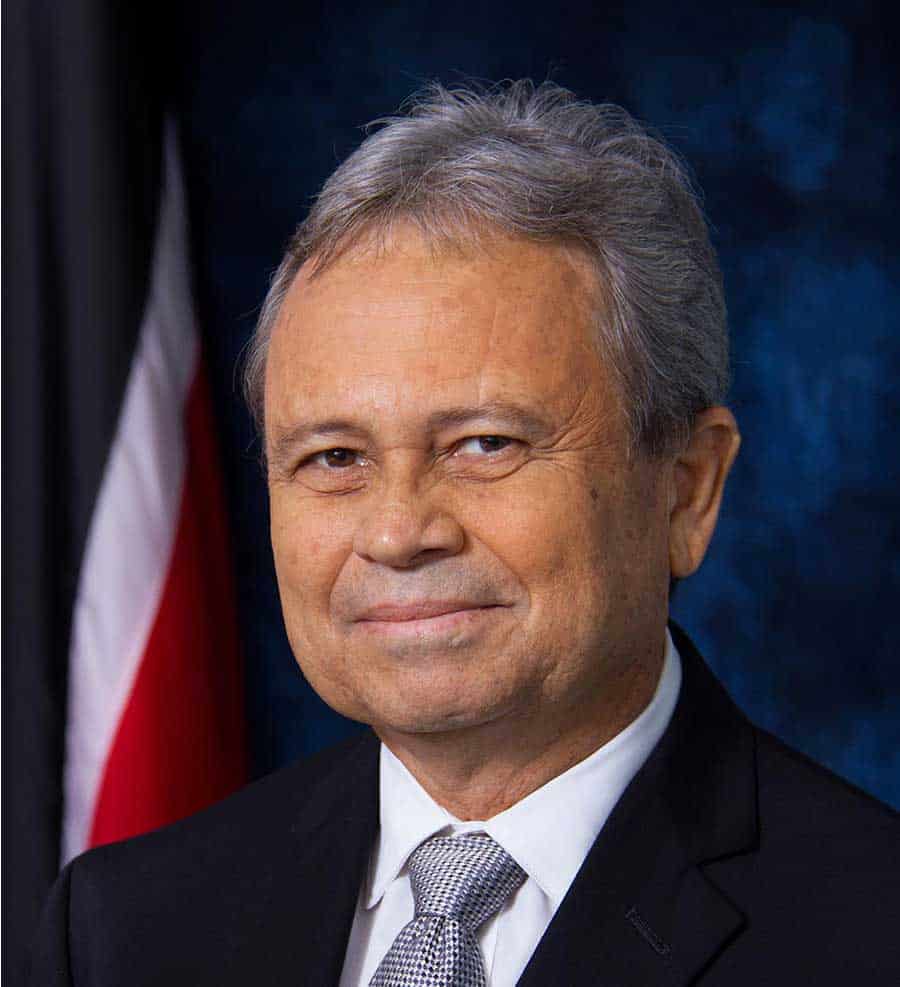
Above:Minister of Finance Colm Imbert
BitDepth#1374 for October 03, 2022
The 2022-2023 national budget presented by Finance Minister Colm Imbert last week once again used this national planning document to laud the excellence of the government in power and its great financial wisdom.
Mentions of digital transformation were largely deployed to offer window dressing for an effort to express financial allocations as public relations success.
To get the real story, skip the chatty and self-congratulatory budget speech in favour of the Public Sector Investment Programme (PSIP) 2023 document, a more detailed, though often deliberately vague strategic outline of the planned spending over TT’s next fiscal year.
There’s a second PSIP 2023-2025 document that attempts to extrapolate spending on major projects over the next three years, but offers little in the way of detail or explanation about the numbers it offers up for 2024 and 2025.
It’s a half-hearted commitment to project continuity, but falls short of offering clarity about last year’s spending.
“Creating a digital nation” is listed as priority area seven out of nine and while the list of development goals is probably not organised by priority, there’s little in next year’s PSIP that establishes any priorities for the new Digital Transformation Ministry.
The Government Cloud.
Under ICT infrastructure, there is a plan for a Government Data Centre and Government Cloud, “So that information and services would continue to be available to citizens should we be cut off from the outside world in the future.”
While this is sensible thinking, it isn’t the only reason why local state datasets should be hosted locally. International data connectivity isn’t even the most important one.
There are issues of privacy and sovereignty inherent in the management of state datasets and they aren’t discussed anywhere.
It’s a resource that should be given priority given all the projects that promise to bring networked advantages to government ministries and agencies, but there’s no timeline offered for the project, which is not a trivial undertaking.

Governance using digital systems.
Several agencies are identified in the PSIP as requiring centralised data management systems. Along with an overdue overhaul of the computing assets at the Institute of Marine Affairs, a Digital Enterprise Content Management system has been identified as necessary.
The Land Management Division of the Ministry of Lands and Fisheries also requires an Electronic Document Management System to manage the result of digitalising all State land files.
Will the datasets generated by these and other projects live on the promised government cloud or remain in digital silos?
Given that the networking of police stations has been going on for more than three years now in a computing infrastructure version of Cepep, shouldn’t there be a more specific focus on addressing clear shortfalls in the execution of government hardware installations before planning a data centre?
Ministry of Digital Transformation
In the 2023 PSIP, budget allocations are listed by project along with the ministries responsible for their execution.
There are three listed projects for which the MODT has specific responsibility with budget allocations totalling $90 million.
It’s unlikely that this is a drop from last year’s budget allocation of $200 million since there are several digital projects in other ministries that are likely to proceed in collaboration with the MODT, but when you’re not the project lead, it’s hard to make the pack follow.
In a confusing note in the PSIP, the ministry apparently got funding assistance from the IDB under the project “Computerisation of the Ministry of Digital Transformation” to get its own computers and printers.
The MODT also accepted US $49,900 in grant funding from the Caribbean Development Bank to hire consultants for its “Establishment of an Interoperability Ecosystem” project.
Will the MODT have to crowdsource to buy its toiletries next?
“TTWiFi services will be established in “highly populated areas.” Why? What problem is this intended to solve?
Even more oddities.
Eight million has been allocated to deliver online access to the Labour Ministry’s services. An additional $0.9 million has been budgeted for a Labour Ministry website capable of delivering e-services.
Wasn’t this was what TTConnect (unavailable without explanation for more than two months) was for?
TTWiFi services will be established in “highly populated areas.” Why? What problem is this intended to solve?
Many TTWiFi projects have been undertaken by the Telecommunications Authority, which has dipped into its Universal Service Fund to execute them. How will this deployment be funded?
Electronic payment providers and e-money issuers can access a one-time tax credit of $50,000, an incentive to encourage more participants. But there is no shortage of applicants, just a lack of enthusiasm to authorise them.
Why not open e-money issuer status to the players already knocking on the Central Bank’s doors?
“Open data”
An Open Data Initiative is being promised to, “allow for the availability and sharing of reliable data and cater to the digitalization of systems and business processes of ministries, departments and agencies.”
That’ss not what open data is. That goal is achieved by building networked systems that communicate with each other seamlessly using established protocols.
In governance, open data is the publication of data, scrubbed of personally identifiable information, that the public is free to use and repurpose while acknowledging its provenance.
Describing an effort to resolve the babel of current government digital practice as open data is both absurd and dangerously misleading.
At present, the government has, to its credit, implemented a National Summary Data Page (NSDP) that offers basic economic indicators, apparently as part of its commitment to participate in the IMF’s Enhanced General Data Dissemination System.
The NSDP links to other resources and usefully gathers these links on a single page, but the currency of the data remains limited by the frequency of source updates.
This is top level summary data, however, not the kind of mass dataset that can inform business investment, infrastructure decision-making or, for that matter, national planning.


